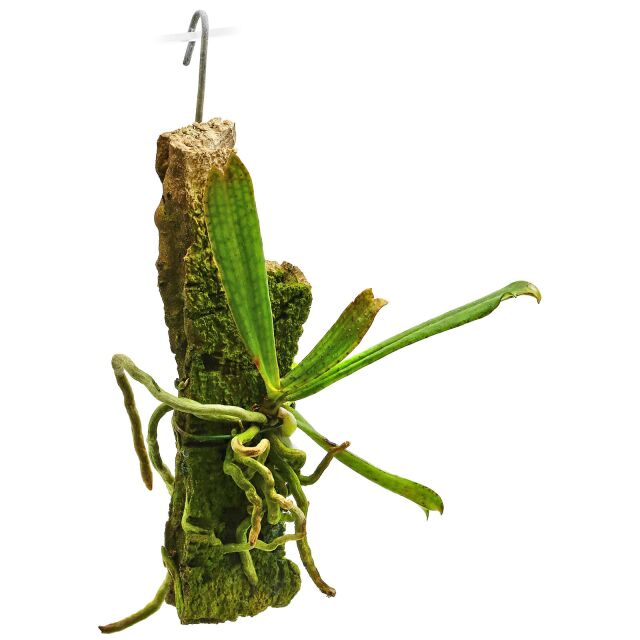Kirk's Aerangis



Aerangis kirkii
Kirk's Aerangis
- Small orchid wild type
- White, fragrant blossom
- Often pendulous inflorescences
- Suitable for rainforest terrariums
- Forms tangle of aerial roots
Sign in or Register
Item question
We’re here for you!
Please enter your question and e-mail and we’ll contact you as soon as possible. It usually takes us up to 24 hours during business days to respond.
Thank you for your question!
Thank you, we’ll get in touch!
Close window
You already sent us a question.
Please wait a few minutes
Description
Aerangis kirkii is a small orchid from East Africa with white, fragrant flowers. It grows from Kenya to KwaZulu-Natal in South Africa in the lowlands as an epiphyte on bushes and trees, mostly in deep shade. It has a 1 - 5 cm long stem with densely arranged leaves and many grey-white roots. The leathery leaves are up to 15 cm long, usually shorter, and distinctly divided into two lobes at the tip. The horizontal to pendulous inflorescences are up to about 17 cm long and have 2 - 6 white, star-shaped, 3 - 5 cm flowers.
In epiphytic orchids, the roots have special adaptations to the natural habitat. As adhesive and aerial roots, they anchor the plant to the trees and secure the difficult water and nutrient supply from rain, mist and water running off the trees. They soak up the water with the help of a special cell layer (the velamen radicum), through which they often appear grey. In nature, the roots are colonised by symbiotic fungi (mycorrhiza), which improve the nutrient supply but are not necessary in cultivation. In addition, the green root tips contain chlorophyll and participate in photosynthesis.
In culture, the roots should be mainly exposed and are also particularly sensitive to waterlogging. The plants are therefore tied up on materials such as cork bark or porous rock or planted in shallow baskets or transparent pots with coarse, airy orchid substrate. Spray the plants several times a week with soft or calcium-poor water. Orchids in pots should be watered about once a week. You can add an orchid and Tillandsia fertiliser with every second watering. Higher humidity above 60 % is important, but also air circulation, because constantly very humid, stagnant air is harmful. After spraying, the plants should be allowed to dry. Lowering the temperature by a few degrees at night is an advantage. As a shade plant, Aerangis kirkii needs moderate light. For daylight cultivation, the place should be bright, but not sunny. Temperatures around 20 to 24 °C are optimal.
This orchid wild type with a peculiar leaf shape can be kept in rainforest terrariums. With its tangle of aerial roots and white flowers on often drooping inflorescences, it contributes to an authentic jungle atmosphere as a percher on branches.
Terrarienpflanzen
Our terrarium plants give every terrarium an individual, natural atmosphere and at the same time provide a healthy environment for all terrarium inhabitants. Our wide range of tropical, subtropical and even arid plants are easy to combine and enhance any terrascape. Whether it's strong succulents, subtle tillandsias, eye-catching neoregelias or wonderful orchids - we offer terrarium plants for different terrascapes from rainforest to desert.
General information
Please choose a variant to see more information.
| Item no. |
|
| EAN | |
| Weight | |
| Shipping weight |
Customers ask customers
You have questions about this product? Ask other customer or our support team about this product!